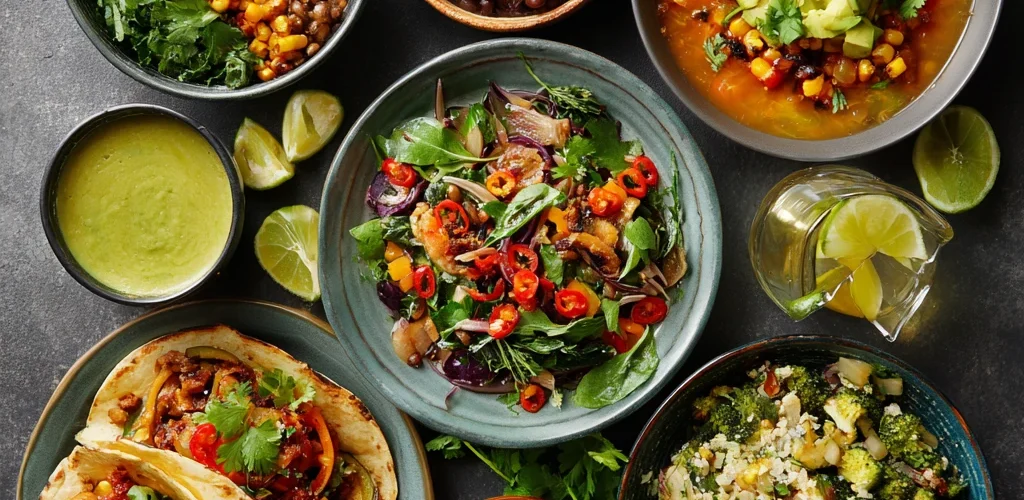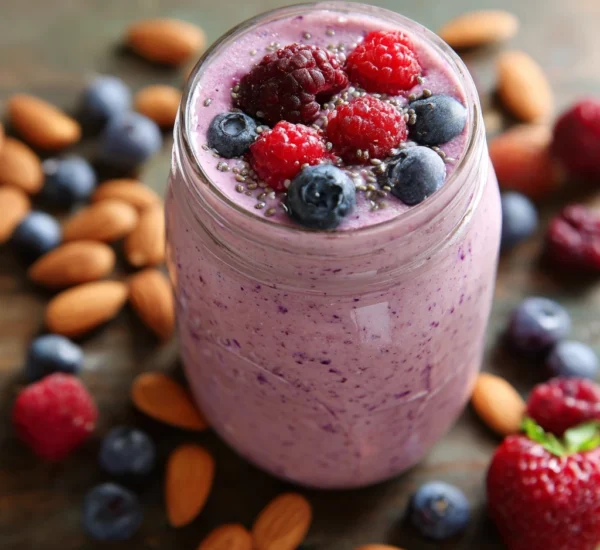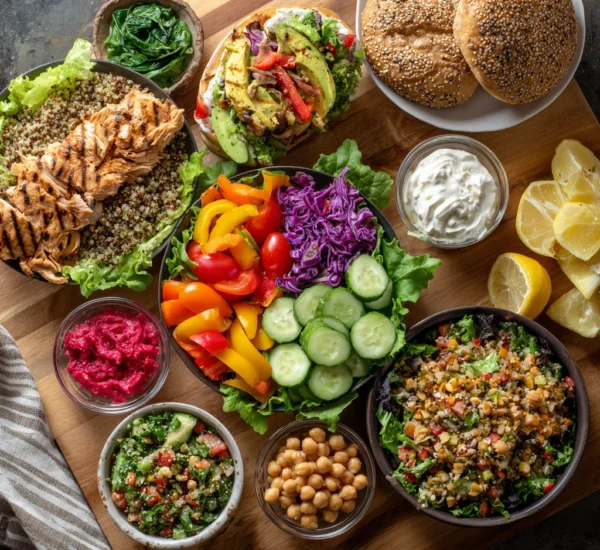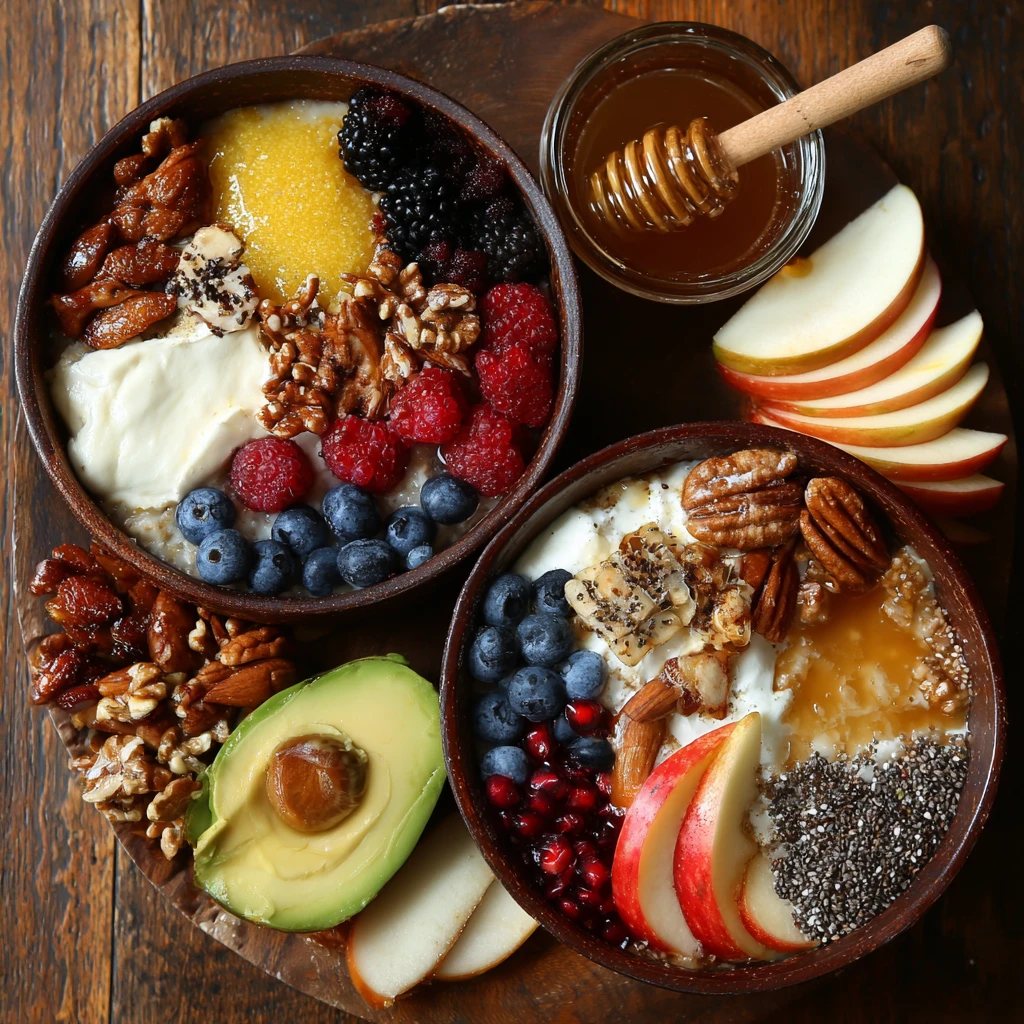Flavorful Plant-Forward Dishes Anyone Can Make
The rise of plant-based eating has opened up a world of delicious and accessible culinary possibilities. Ditching the meat doesn’t mean sacrificing flavor; in fact, it often enhances it. This guide explores flavorful, plant-forward dishes that are easy for cooks of all skill levels to create, transforming everyday ingredients into culinary delights.
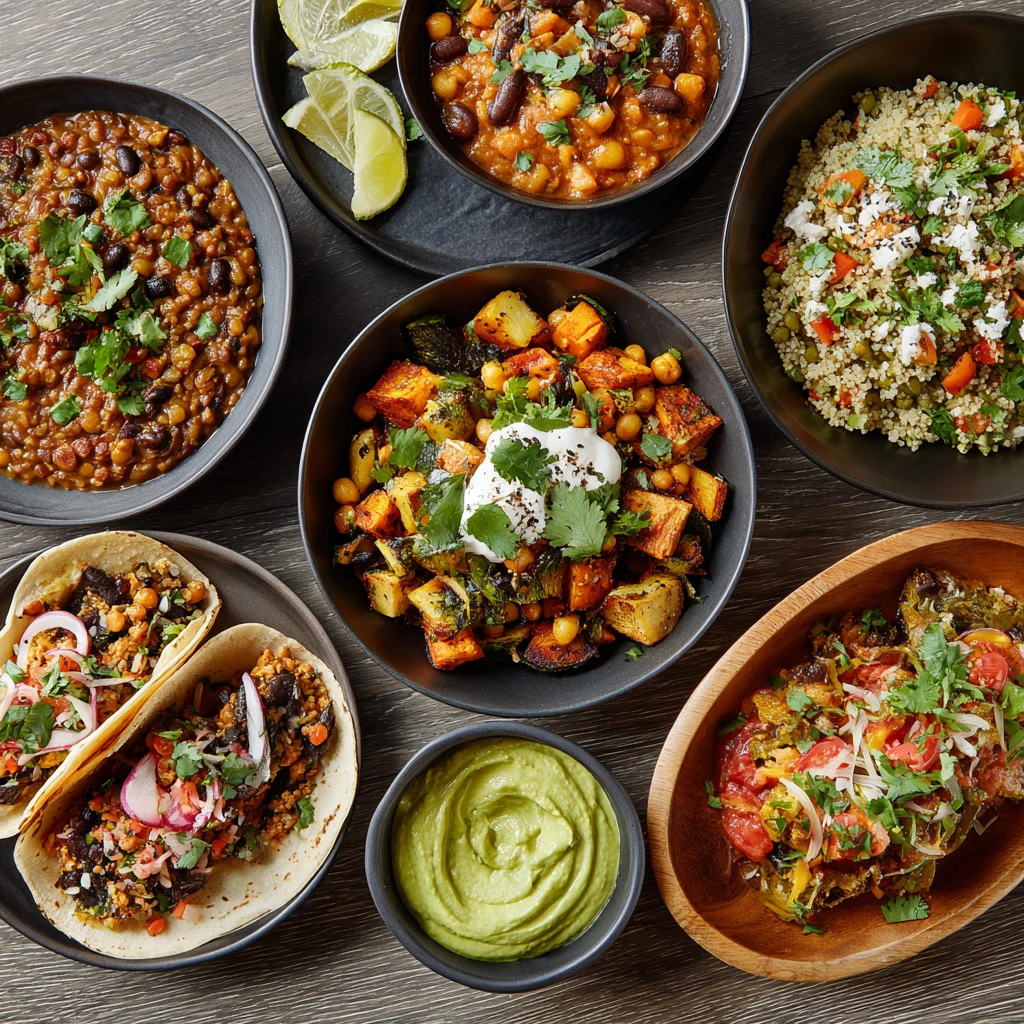
Embracing Plant-Based Ingredients
Before diving into recipes, let’s explore the core ingredients that make plant-forward dishes so compelling. The key is variety and creativity, focusing on vibrant vegetables, legumes, grains, and fruits.
The Power of Vegetables
Vegetables are the stars of any plant-forward meal. Consider using seasonal produce for the best flavor and nutritional value. Roasting vegetables like broccoli, cauliflower, and Brussels sprouts brings out their natural sweetness. Sautéing greens like spinach, kale, and chard with garlic and olive oil provides a quick and nutritious side. Don’t underestimate the versatility of root vegetables like carrots, potatoes, and sweet potatoes, which can be mashed, roasted, or added to stews.
Legumes: The Protein Powerhouse
Legumes such as lentils, chickpeas, beans, and peas are excellent sources of plant-based protein and fiber. They add substance and depth to meals. Lentils cook quickly and are perfect for soups and stews. Chickpeas can be roasted for a crispy snack or blended into hummus. Beans are incredibly versatile and can be used in everything from chili to salads. Tofu and tempeh, both derived from soybeans, offer even more protein and can be marinated and cooked in various ways.
Grains and Seeds: The Foundation of Plant-Based Meals
Grains like quinoa, brown rice, farro, and oats provide a solid foundation for plant-forward dishes. Quinoa is a complete protein and cooks quickly, making it a great choice for salads and bowls. Brown rice offers a nutty flavor and satisfying texture. Farro is a chewy grain that adds substance to soups and salads. Seeds like chia, flax, and hemp seeds can be sprinkled on top of meals for added nutrition and texture.
Fruits: Sweetness and Versatility
Fruits aren’t just for dessert. They can add sweetness, acidity, and vibrant color to savory dishes. Mango salsa pairs beautifully with black bean tacos. Roasted grapes add a burst of sweetness to salads. Apples and pears can be caramelized and used in tarts or served alongside plant-based roasts.
Easy Plant-Forward Recipes
Now, let’s move onto some specific recipes that showcase the power of plant-based ingredients. These recipes are designed to be simple, flavorful, and accessible to cooks of all levels.
Quick Lentil Soup
This soup is a hearty and comforting meal that comes together in under an hour.
Ingredients:
- 1 tablespoon olive oil
- 1 onion, chopped
- 2 carrots, chopped
- 2 celery stalks, chopped
- 2 cloves garlic, minced
- 1 cup brown or green lentils, rinsed
- 6 cups vegetable broth
- 1 teaspoon dried thyme
- 1/2 teaspoon smoked paprika
- Salt and pepper to taste
- Lemon wedges, for serving
Instructions:
1. Heat olive oil in a large pot over medium heat. Add onion, carrots, and celery and cook until softened, about 5 minutes.
2. Add garlic and cook for 1 minute more.
3. Stir in lentils, vegetable broth, thyme, and smoked paprika. Bring to a boil, then reduce heat and simmer for 30 minutes, or until lentils are tender.
4. Season with salt and pepper to taste.
5. Serve hot with lemon wedges.
Roasted Vegetable and Quinoa Bowl
This bowl is packed with nutrients and flavor, and it’s easy to customize with your favorite vegetables.
Ingredients:
- 1 cup quinoa, rinsed
- 2 cups vegetable broth
- 1 head broccoli, cut into florets
- 1 red bell pepper, chopped
- 1 zucchini, chopped
- 2 tablespoons olive oil
- Salt and pepper to taste
- 1/4 cup tahini
- 2 tablespoons lemon juice
- 1 tablespoon maple syrup
- 2 tablespoons water
Instructions:
1. Preheat oven to 400°F (200°C).
2. Cook quinoa according to package directions using vegetable broth instead of water.
3. Toss broccoli, bell pepper, and zucchini with olive oil, salt, and pepper. Spread on a baking sheet and roast for 20-25 minutes, or until tender and slightly browned.
4. While vegetables are roasting, whisk together tahini, lemon juice, maple syrup, and water in a small bowl.
5. Assemble bowls with quinoa, roasted vegetables, and tahini dressing.
Black Bean Tacos with Mango Salsa
These tacos are a vibrant and flavorful meal that’s perfect for a weeknight dinner.
Ingredients:
- 1 tablespoon olive oil
- 1 onion, chopped
- 2 cloves garlic, minced
- 1 teaspoon chili powder
- 1/2 teaspoon cumin
- 1/4 teaspoon smoked paprika
- 1 (15-ounce) can black beans, rinsed and drained
- Salt and pepper to taste
- 1 mango, diced
- 1/2 red bell pepper, diced
- 1/4 red onion, diced
- 1 jalapeño, seeded and minced
- 1/4 cup cilantro, chopped
- Lime juice to taste
- Corn or flour tortillas
- Avocado, for topping (optional)
Instructions:
1. Heat olive oil in a skillet over medium heat. Add onion and cook until softened, about 5 minutes.
2. Add garlic, chili powder, cumin, and smoked paprika and cook for 1 minute more.
3. Stir in black beans, salt, and pepper. Cook for 5 minutes, or until heated through.
4. In a separate bowl, combine mango, red bell pepper, red onion, jalapeño, and cilantro. Season with lime juice to taste.
5. Warm tortillas according to package directions.
6. Fill tortillas with black bean mixture and top with mango salsa and avocado, if desired.
Creamy Avocado Pasta
This pasta dish is both decadent and incredibly easy to make. The avocado creates a rich and creamy sauce without any dairy.
Ingredients:
- 1 pound pasta (spaghetti, linguine, or penne work well)
- 2 ripe avocados
- 1/4 cup olive oil
- 2 cloves garlic, minced
- 1/4 cup fresh basil, chopped
- 2 tablespoons lemon juice
- Salt and pepper to taste
- Red pepper flakes (optional)
Instructions:
1. Cook pasta according to package directions. Reserve about 1/2 cup of pasta water before draining.
2. While pasta is cooking, combine avocados, olive oil, garlic, basil, and lemon juice in a food processor or blender. Blend until smooth and creamy.
3. Season with salt, pepper, and red pepper flakes, if desired.
4. Add pasta to the food processor or blender and pulse until combined, adding pasta water as needed to reach desired consistency. Alternatively, you can mix the sauce with the pasta in the pot.
5. Serve immediately, garnished with extra basil and red pepper flakes, if desired.
Sweet Potato and Chickpea Curry
This curry is a warm and flavorful dish that’s perfect for a cozy night in. It’s packed with vegetables and plant-based protein.
Ingredients:
- 1 tablespoon coconut oil
- 1 onion, chopped
- 2 cloves garlic, minced
- 1 inch ginger, grated
- 1 teaspoon curry powder
- 1/2 teaspoon turmeric
- 1/4 teaspoon cayenne pepper (optional)
- 1 (15-ounce) can chickpeas, rinsed and drained
- 1 large sweet potato, peeled and cubed
- 1 (14.5-ounce) can diced tomatoes, undrained
- 1 cup vegetable broth
- 1 (13.5-ounce) can coconut milk
- Salt and pepper to taste
- Cilantro, for garnish
- Cooked rice, for serving
Instructions:
1. Heat coconut oil in a large pot over medium heat. Add onion and cook until softened, about 5 minutes.
2. Add garlic and ginger and cook for 1 minute more.
3. Stir in curry powder, turmeric, and cayenne pepper (if using) and cook for 30 seconds.
4. Add chickpeas, sweet potato, diced tomatoes, and vegetable broth. Bring to a boil, then reduce heat and simmer for 20 minutes, or until sweet potato is tender.
5. Stir in coconut milk and season with salt and pepper to taste.
6. Serve hot over rice, garnished with cilantro.
Tips for Flavorful Plant-Forward Cooking
Elevating plant-forward dishes involves a few simple techniques and considerations that can significantly boost flavor and enjoyment.
Mastering Marinades
Marinades are your secret weapon for infusing plant-based proteins and vegetables with incredible flavor. For tofu, a combination of soy sauce, maple syrup, ginger, and garlic works wonders. Tempeh benefits from smoky flavors like smoked paprika and liquid smoke. Marinate vegetables like mushrooms or eggplant in balsamic vinegar, herbs, and garlic before grilling or roasting.
The Art of Spices and Herbs
Don’t be afraid to experiment with different spices and herbs to create unique flavor profiles. Cumin, coriander, and chili powder are great for Mexican-inspired dishes. Turmeric, ginger, and garlic are staples in Indian cuisine. Italian herbs like oregano, basil, and thyme enhance the flavors of pasta and vegetables. Fresh herbs add a burst of brightness to any dish.
The Importance of Acid
A touch of acid can brighten up any dish and balance flavors. Lemon juice, lime juice, vinegar (balsamic, apple cider, or red wine), and even a splash of hot sauce can make a big difference. Add acid towards the end of cooking for the best results.
Don't Forget Umami
Umami, the savory fifth taste, is essential for creating satisfying plant-forward meals. Ingredients like mushrooms, tomatoes, nutritional yeast, miso paste, and soy sauce are all rich in umami. Adding these ingredients to your dishes will enhance their overall flavor and make them more satisfying.
Overcoming Common Challenges
Many people worry that plant-forward eating is difficult or restrictive. However, with a little planning and creativity, it can be easy and enjoyable.
Addressing Protein Concerns
One of the biggest concerns people have about plant-forward diets is getting enough protein. However, many plant-based foods are excellent sources of protein, including legumes, tofu, tempeh, quinoa, and nuts. By incorporating a variety of these foods into your meals, you can easily meet your protein needs.
Avoiding Blandness
Blandness is another common concern. The key to avoiding blandness is to use plenty of herbs, spices, and flavorful sauces. Don’t be afraid to experiment with different combinations to find what you like. Roasting vegetables also brings out their natural sweetness and adds depth of flavor.
Planning and Prep
Planning and preparation are essential for making plant-forward eating easier. Take some time each week to plan your meals and make a grocery list. Chop vegetables and cook grains in advance to save time during the week. Having healthy snacks on hand will also help you avoid unhealthy cravings.
Conclusion
Plant-forward cooking is a journey of exploration and discovery. It’s about embracing the abundance of delicious ingredients that nature has to offer and creating meals that are both healthy and satisfying. With a little creativity and planning, anyone can create flavorful plant-forward dishes that are easy to make and good for you. So, step into the kitchen, experiment with new flavors, and enjoy the delicious world of plant-based cuisine.
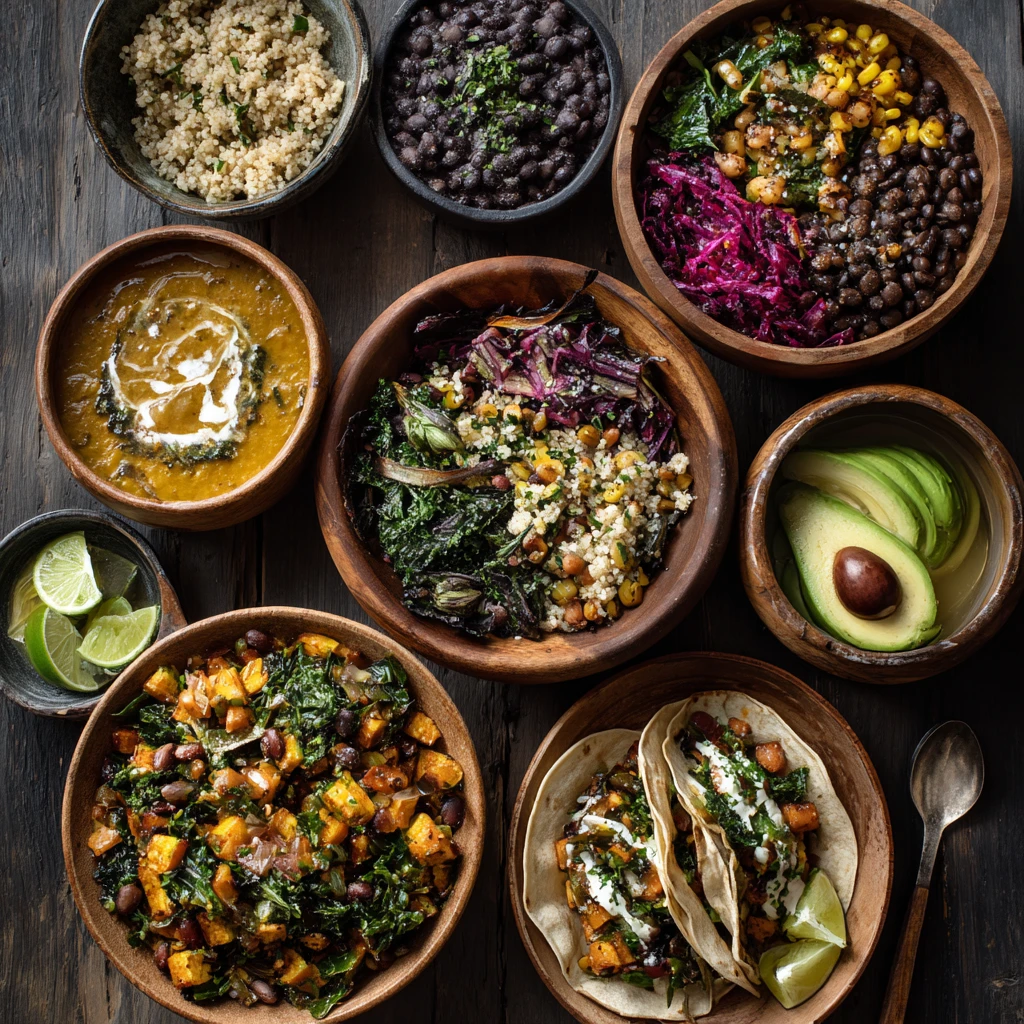
FAQ
Q: What does plant-forward mean?
A: Plant-forward refers to a style of eating that prioritizes plant-based foods such as fruits, vegetables, legumes, and grains, while still allowing for occasional inclusion of meat, poultry, or fish. It’s about making plants the star of your plate.
Q: Is a plant-based diet healthy?
A: Yes, a well-planned plant-based diet can be very healthy. It’s often rich in fiber, vitamins, minerals, and antioxidants, and can be beneficial for weight management, heart health, and reducing the risk of certain diseases.
Q: What are some easy plant-based meals?
A: Some easy plant-based meals include lentil soup, roasted vegetable and quinoa bowls, black bean tacos with mango salsa, creamy avocado pasta, and sweet potato and chickpea curry. These recipes are simple to make and can be customized to your liking.
Q: What is the best source of protein for vegetarians?
A: Excellent sources of protein for vegetarians include legumes (like lentils, chickpeas, and beans), tofu, tempeh, quinoa, nuts, and seeds.
Q: How do I make plant-based meals flavorful?
A: To make plant-based meals flavorful, use a variety of herbs, spices, and flavorful sauces. Experiment with marinades, add a touch of acid, and incorporate umami-rich ingredients like mushrooms, tomatoes, and nutritional yeast.
Q: Can you lose weight on a plant-based diet?
A: Yes, many people find that they lose weight on a plant-based diet. Plant-based foods are often lower in calories and higher in fiber, which can help you feel full and satisfied.
